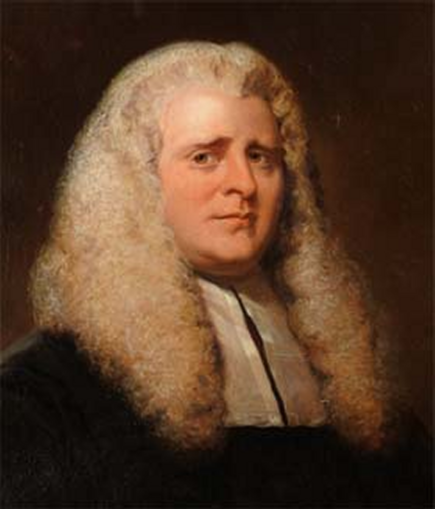
See page for author [Public domain], via Wikimedia Commons
It was conjectured by Wilson and published in a book by Waring in 1770. It was proved by Lagrange in 1773. A manuscript of 1682 indicates that Leibniz was aware of the result.
If and only if \(p\) is a prime number, then
\(\displaystyle \frac {(p-1)! + 1}{p}\)
is a natural number.
In modular arithmetic, we write Wilson’s Theorem as the congruence
\(\bbox[10px,border:2px solid black]{(p-1)!\equiv -1\pmod p}\)
The converse of Wilson’s Theorem is also true.
If \(n \gt 1\) is a natural number and \((n-1)!\equiv -1\pmod n\), then \(n\) is prime.
For a composite number, \(n\), \((n-1)!\equiv 0\pmod n\) except when \(n = 4\).
For small values we have
\(\begin{array}{r|r|r|r}
n & (n-1)! & (n-1)!\pmod n & Prime?\\
\hline
2 & 1 & 1 & T\\
3 & 2 & 2 & T\\
4 & 6 & 2 & F\\
5 & 24 & 4 & T\\
6 & 120 & 0 & F\\
7 & 720 & 6 & T\\
8 & 5040 & 0 & F\\
9 & 40320 & 0 & F\\
10 & 362880 & 0 & F\\
11 & 3628800 & 10 & T
\end{array} \)
For example :
\(7\) is prime.
\((7-1)! = 6! = 1 \times 2 \times 3 \times 4 \times 5 \times 6 = 720\)
Using
\(\displaystyle \frac {(p-1)! +1}{p} = n\)
We have
\(\displaystyle \frac {6! + 1}{7} = \frac {721}{7} = 103\)
In modular arithmetic, we write this as the congruence
\(6! \equiv -1 \pmod 7\)
One way to explain how this works is by using modular multiplicative inverses.
Ordinary multiplication gives :
\(\begin {array}{c|cccccc}
\times & 1 & 2 & 3 & 4 & 5 & 6\\
\hline
1 & 1 & 2 & 3 & 4 & 5 & 6\\
2 & 2 & 4 & 6 & 8 & 10 & 12\\
3 & 3 & 6 & 9 & 12 & 15 & 18\\
4 & 4 & 8 & 12 & 16 & 20 & 24\\
5 & 5 & 10 & 15 & 20 & 25 & 30\\
6 & 6 & 12 & 18 & 24 & 30 & 36
\end{array}\)
Multiplication in modulo \(7\) gives the residues (remainders) :
\(\begin {array}{c|cccccc}
\times & 1 & 2 & 3 & 4 & 5 & 6\\
\hline
1 & 1 & 2 & 3 & 4 & 5 & 6\\
2 & 2 & 4 & 6 & 1 & 3 & 5\\
3 & 3 & 6 & 2 & 5 & 1 & 4\\
4 & 4 & 1 & 5 & 2 & 6 & 3\\
5 & 5 & 3 & 1 & 6 & 4 & 2\\
6 & 6 & 5 & 4 & 3 & 2 & 1
\end{array}\)
By inspection of the above table, we see that \(2\) and \(4\) and \(3\) and \(5\) are modular multiplicative inverses of each other since \(1\) is the multiplicative identity. \(1\) and \(6\) are both self-inverse.
Thus, we can write
\(6! \equiv 1 \times 1 \times 1 \times 1 \times 1 \times 6 \pmod 7 \equiv 1 \times 6 \pmod 7 \equiv -1 \pmod 7\)
© OldTrout \(2019\)



